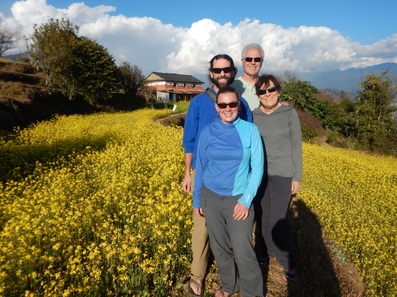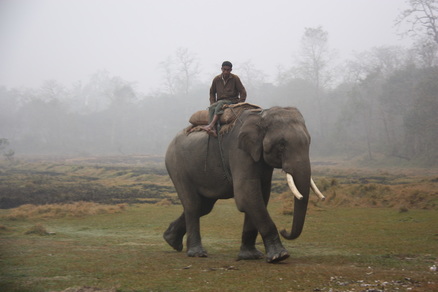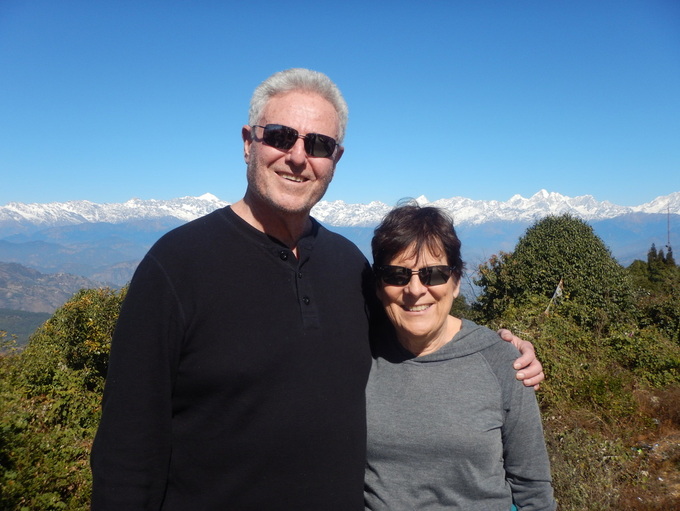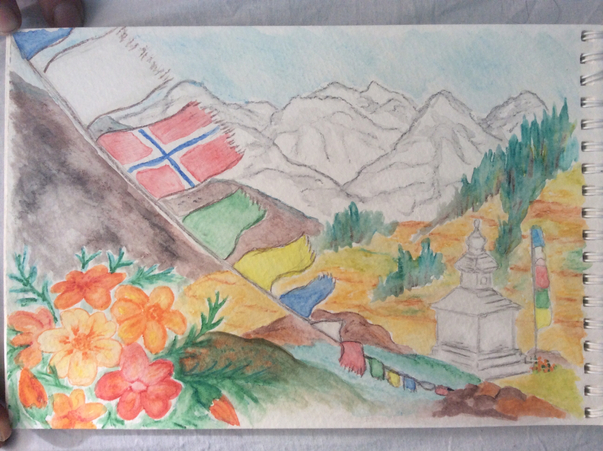Over a month later, simply another chance meeting would have been a noteworthy coincidence in and of itself, but we soon discovered there was almost a disconcerting amount of overlap of our plans. Tobi was also heading to Thailand on a flight he booked through Asian Heritage! We quickly realized that if we all flew together, he could help us with our luggage woes. The airline allowed 30 kilos of free luggage per person, but each kilo over the limit would supposedly be subject to a ridiculously steep overweight charge. With our bicycles included in the 30 kilos, we knew we were well beyond our free allotment. Since Tobi was not even planning on checking a bag, he kindly agreed to carry one our unwieldy duffel bags to Bangkok for us. I guess there are some people in the world that you are simply meant to cross paths with, especially when traveling.
With one logistical challenge taken care of, we turned our attention to figuring out how to box our bikes. Up until now, we had always had the luxury of our wedge-shaped AirCaddy boxes that required almost no disassembly of the bicycles and offered a high level of protection. Sadly, we had to ditch them in Beijing when we began this open-ended journey seven months prior. It was an all day process with its fair share of stressful moments, but for better or worse, we packed them in to standard bike boxes purchased from a local bike shop.
On the morning of Friday the 13th, we three arrived to the airport only to find out that our flight had been cancelled without explanation. Our agent Nilam had warned us of this, saying that Nepal Airlines was the cheapest, but "sometimes the plane does not fly," so it is better if our travel plans were flexible. We had no specific schedule, but Tobi was attending a friend's wedding that weekend, so it was with great relief that we were easily rebooked on a Thai Airlines flight that same afternoon. They did not even bat an eye when our luggage totaled 93 kilos at check in.
My bicycle fared well, but it looked like someone had used Matt's box for a punching bag with a gaping hole in one side. We examined the bike as best we could in the airport, but it was not until we were on the road a few days later that we noticed his rear rack was decently bent. Leaving customs, we found a representative for the hotel we had booked near the airport. When simply trying to clarify the situation of putting our bicycles on their free shuttle service, she began angrily yelling at us, which made us not understand what she was saying even more. The shuttle driver demanded the equivalent of $10 to put our bicycle boxes in the minivan shuttle while simultaneously gesturing that there was no room. We refused to pay and a stand-off began. Once the four other passengers had taken their seats in the front of the van, we simply ignored the existence of the unhelpful driver and I crawled in to the back, folded down the last two rows of seats, and a miracle happened: we easily slid the two bicycle boxes into the van! It's true that Matt and I were a bit squished without proper seats for the ten minute ride, but we were the only ones ever inconvenienced by our horrible request. Not exactly the welcome we were expecting to the self-declared "Land of Smiles."
We clumsily reassembled our bicycles the next morning, then brought a bag of gear we would not need for the next few of weeks of travel to the front desk to put into luggage storage. The receptionist informed us that there would be a $1.50 per day charge and no long term discount was offered. After always storing our luggage for free in Nepal, this seemed absurd and so our excitement to travel a bit lighter than usual was extinguished as we reluctantly repacked our long underwear, down jackets, two-pound guidebook for China, and other odds and ends into our panniers.
We managed to depart mid-afternoon with the plan to "deal with Bangkok later" by heading in its opposite direction from the airport. We would follow the coast eastward, head inland to loop back to Bangkok, then go south down what we had dubbed "the peninsula" to meet up with my sister and her boyfriend. The Lonely Planet guidebook mentions that the Eastern Seaboard is the most industrialized region of Thailand, so we knew we would feel right at home after our route through China. On our first day back in the saddle, we went from zero to 60 miles in six hours flat. Although it was just along a busy, noisy, fume-filled, multi-lane highway, it felt exhilarating just to be pushing the pedals fully-loaded again. Besides, I couldn't think of a more romantic way to spend Valentine's Day, could you? (On a side note, my dear husband calls it Valentime's, which is cute, but also supports my suspicion that he really is a five-year-old trapped in a forty-year-old's body.)
The process of departing Nepal brought to light all of the connections we had made to people and place, yet we recognized that we had not been valuing the potential of each day. We had begun to see our surroundings through the lazy eyes of familiarity. There is nothing like suddenly being immersed in a drastically different place to help in the battle against long term travel ambivalence. At the same time, Thailand has enough of a pan-Asian vibe that we were not feeling much in the way of culture-shock (apart from all of the rude staff at the hotel). Rather, we were dealing with some serious climate-shock having just come from winter in the Himalaya.
Fortunately, along with sea-level temperatures comes pretty flat terrain, which was a key factor in our ability to cover any amount of distance during those first few days. We still have not broken the bad habit of leisurely mornings and departing in the height of the day's heat, but this also results in us riding through the cooler late afternoon and even cooler evening hours, often arriving to our targeted town in the dark.
At least one popsicle per day was essential to keeping the heat stroke at bay. One time, we passed by one of the 7,000+ aggressively air-conditioned 7-Elevens in the country (I looked it up after seeing one on literally every corner of every city we passed through and found that Thailand is tied with South Korea for third most 7-Elevens. For comparison, the entire U.S, ranked second after Japan, has only one-thousand more than Thailand). Only a few moments later, we took a somewhat urgent break at a bus stop shelter, which sadly has no popsicles. Just then, a guy rode up on a beat-up pink cruiser bike with a bundle of clothes for sale strapped to the front rack and a styrofoam cooler of life-saving popsicles on the back! We passed on the clothes, wishing we weren't wearing any anyway, but took him up on the cooling treats.
Having spent a week riding through "the real Thailand" with an extra day spent exploring the cities of Si Racha and Chanthaburi, our bodies and minds were just feeling settled in to cycle touring again. So of course that meant it was time to shake up the routine with a bit of island hopping. In fact, we had ceased to describe our journey as a cycle tour, preferring "bicycle-based travel" instead, when we hit only 2,000 miles on the bikeometer and realized that we had spent more time off the bicycle than on it!
About that same time, it dawned on us just how illogical our plan to head east was knowing that we would soon need to be in the south. Spontaneity is great until you develop hindsight. In our haste to get to Thailand and get moving somewhere, we hadn't really bothered to research the feasibility of our route. We just went for it. At roughly the same size as France, Thailand was far bigger than we had imagined and we were even impressing ourselves with the slowness of our pace. There would be no time to loop back to Bangkok by bicycle, much less cycling south for a sisterly reunion. This realization was a bit of a downer, but we would deal with the consequences when the time came. In the meanwhile, we were antsy to get to our first legit vacation-worthy destination: the tropical island of Koh Chang.





 RSS Feed
RSS Feed
